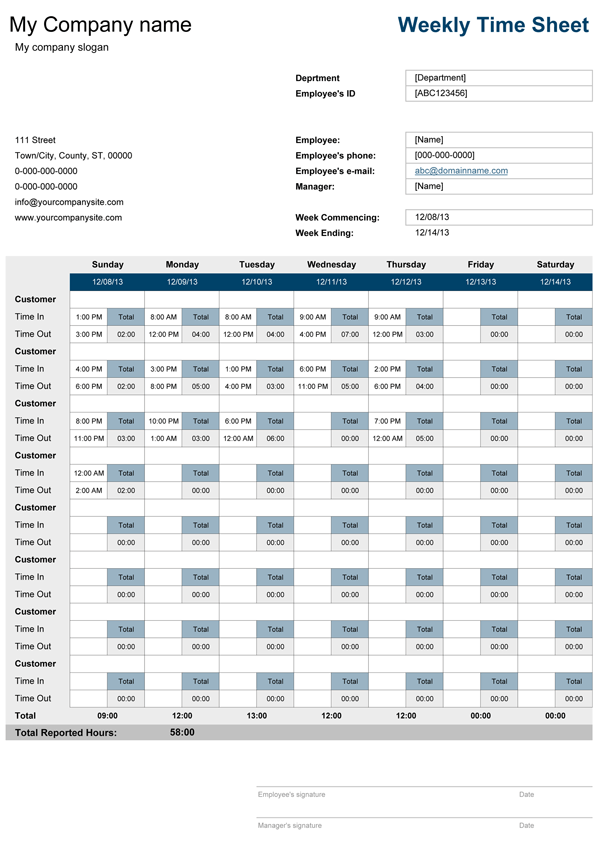

- #Microsoft excel templates for time cards software#
- #Microsoft excel templates for time cards download#
Then, do the same thing for the time selections. Make sure the Source is targeting our Hour list by pointing this field there (=Options!$D$2:$D$25). Here, select Data Validation and select List from the Allow menu. First, select the first Hour cell (C6), then go to the Excel ribbon Data. We’re going to use Data Validation to create combo box type of selectors for time fields. Let’s add a new sheet (Options sheet in our example) and create two columns of numbers Hours (0 to 23) and Minutes (0 to 59). This way, we guarantee that users enter times in the correct format. We can do this by adding an Hours and a Minutes column for each Time In/Out. Next, we’re going to create lists to build time selection lists. All dates in column B will now only display day of the week. From the menu, select Custom for Category and dddd for Type. Select the cells in the B column (B6:B12) and right click. Simply type in =A6 into cell B6 and press Enter. To do this, we can make column B (B6:B12) equal to A (A6:A12) and then change the formatting. We can pull the Day of Week from the Date column. An overview of the time offs and how the times add up will come in handy when reading the table. We are going to be using two sets of Time In and Time Outs to allow for a lunch break in between.

#Microsoft excel templates for time cards download#
If you'd like to use the spreadsheet we've created as a guideline, please feel free to download it here. Then, we need a table to input dates, days of the week, and in/out times. We’re going to need a title section where we display the time-card specific information including name of the employee, department, and week of the year. Another question would be whether you want to include a lunch break, as this will determine the general layout and a few formulas in this tool.įirst off, let’s start with creating the labels, and resizing the columns and rows to match text size. In this tutorial, we’re going to create a weekly time card. Typically, companies collect data and pay their employees weekly, biweekly, or monthly. One of your first considerations should be the timeframe. Your requirements will determine whether you need to add data validation, or additional protection. Although this should give you a pretty good idea about the points you should consider when building such a tool, feel free to optimize it for your business case.įirst, you should start with deciding what type of an application you need. In this article we will be focusing on creating your own time card using Microsoft Excel. Billing clients or tracking employee hours can differ greatly for various industries and applications that help this process are rarely one-size-fits-all. However, most professionals swear by the most reliable office tool available (hint: Excel) and build such tools in-house. There are all kinds of applications, proprietary software, and templates that help businesses track their employees and bill their clients.
#Microsoft excel templates for time cards software#
Punch cards were taken over by software a long time ago.


 0 kommentar(er)
0 kommentar(er)
